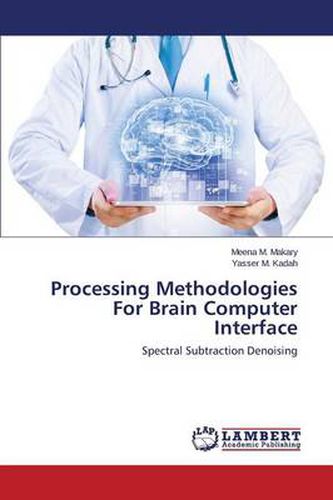Readings Newsletter
Become a Readings Member to make your shopping experience even easier.
Sign in or sign up for free!
You’re not far away from qualifying for FREE standard shipping within Australia
You’ve qualified for FREE standard shipping within Australia
The cart is loading…






This title is printed to order. This book may have been self-published. If so, we cannot guarantee the quality of the content. In the main most books will have gone through the editing process however some may not. We therefore suggest that you be aware of this before ordering this book. If in doubt check either the author or publisher’s details as we are unable to accept any returns unless they are faulty. Please contact us if you have any questions.
A brain-computer interface is a direct communication pathway between a human brain and an external device. It allows users to act on their environment by using only brain activity, without using peripheral nerves and muscles. The paralyzed person controls the brain-computer interface device by performing mental activities which are associated with actions that are dependent on the BCI application. The device is used to acquire the brain signals. Signal processing techniques are then applied to the acquired signals for feature extraction. The classification stage serves as a means of understanding the signal. The classification output is fed to applications which might give a feedback to the brain. Applications may include the control of an on/off switch such as air conditions, mobile phones, etc. Any brain-computer interface system consists of three main parts namely; preprocessing, feature extraction & selection and classification. The most important parts are feature extraction and preprocessing. In this book we demonstrate processing methodologies for BCI namely; adaptive denoising and its effect on the accuracy of different BCI experiments.
$9.00 standard shipping within Australia
FREE standard shipping within Australia for orders over $100.00
Express & International shipping calculated at checkout
This title is printed to order. This book may have been self-published. If so, we cannot guarantee the quality of the content. In the main most books will have gone through the editing process however some may not. We therefore suggest that you be aware of this before ordering this book. If in doubt check either the author or publisher’s details as we are unable to accept any returns unless they are faulty. Please contact us if you have any questions.
A brain-computer interface is a direct communication pathway between a human brain and an external device. It allows users to act on their environment by using only brain activity, without using peripheral nerves and muscles. The paralyzed person controls the brain-computer interface device by performing mental activities which are associated with actions that are dependent on the BCI application. The device is used to acquire the brain signals. Signal processing techniques are then applied to the acquired signals for feature extraction. The classification stage serves as a means of understanding the signal. The classification output is fed to applications which might give a feedback to the brain. Applications may include the control of an on/off switch such as air conditions, mobile phones, etc. Any brain-computer interface system consists of three main parts namely; preprocessing, feature extraction & selection and classification. The most important parts are feature extraction and preprocessing. In this book we demonstrate processing methodologies for BCI namely; adaptive denoising and its effect on the accuracy of different BCI experiments.